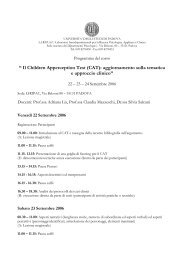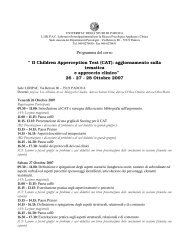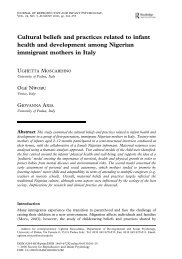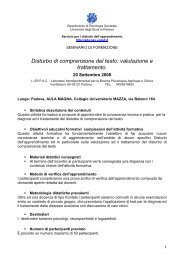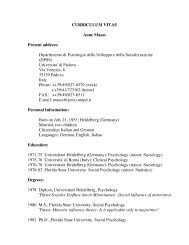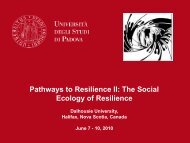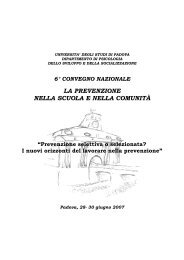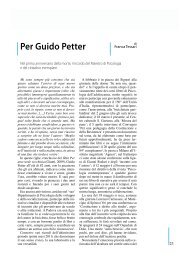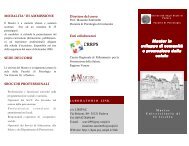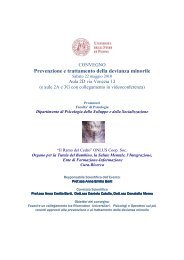Social cognition and moral cognition in bullying: What's ... - DPSS
Social cognition and moral cognition in bullying: What's ... - DPSS
Social cognition and moral cognition in bullying: What's ... - DPSS
You also want an ePaper? Increase the reach of your titles
YUMPU automatically turns print PDFs into web optimized ePapers that Google loves.
emotions (happ<strong>in</strong>ess, sadness, anger, guilt, <strong>and</strong> a neutral face). An example of an<br />
emotion story taken from Sutton et al. (1999b) is:<br />
«Mike wants to go out with his friends, but he has a really bad tummy ache. He<br />
knows that if his Mum notices he is ill, she won’t let him go out to play. Mike<br />
goes downstairs <strong>and</strong> asks his Mum, “Can I go out to play please?”»;<br />
c) Moral stories: <strong>in</strong> these stories the appropriate emotion is a <strong>moral</strong> emotion<br />
because some wrongdo<strong>in</strong>g has happened. In these stories children were also<br />
helped with the draw<strong>in</strong>gs. An example of <strong>moral</strong> story (new) is as follows:<br />
«Claudia has just moved to her new school. She has brown hair, green eyes <strong>and</strong><br />
she is a little bit shorter than her classmates. Dur<strong>in</strong>g the maths class, without<br />
be<strong>in</strong>g noticed by her teacher, Susan, who sits beh<strong>in</strong>d Claudia, sends her a<br />
written note like “Pigmy, dwarf”. Claudia reads this note <strong>and</strong> starts cry<strong>in</strong>g <strong>in</strong><br />
front of all her mates».<br />
Each story was followed by a control question based on the content of the story to<br />
verify that the child understood it; then, an experimental question assess<strong>in</strong>g the<br />
underst<strong>and</strong><strong>in</strong>g of mental states or emotions was asked. For the cognitive stories, an<br />
answer was considered correct if the child referred to the mental state, thoughts, or<br />
beliefs of the characters (e.g. critical question: “Where will the Red army look for the<br />
Blue army <strong>and</strong> why?”; answer: “They will look by the sea because they th<strong>in</strong>k that the<br />
prisoner is ly<strong>in</strong>g to them”). For the emotion stories, a correct answer <strong>in</strong>cluded both the<br />
identification of the appropriate emotion (positive or negative) <strong>and</strong> the reference to the<br />
<strong>in</strong>tention/wish of the ma<strong>in</strong> character to hide his/her own real emotion to the other<br />
characters, for example when a character is “sad” but he or she appears “happy” (e.g.<br />
15



